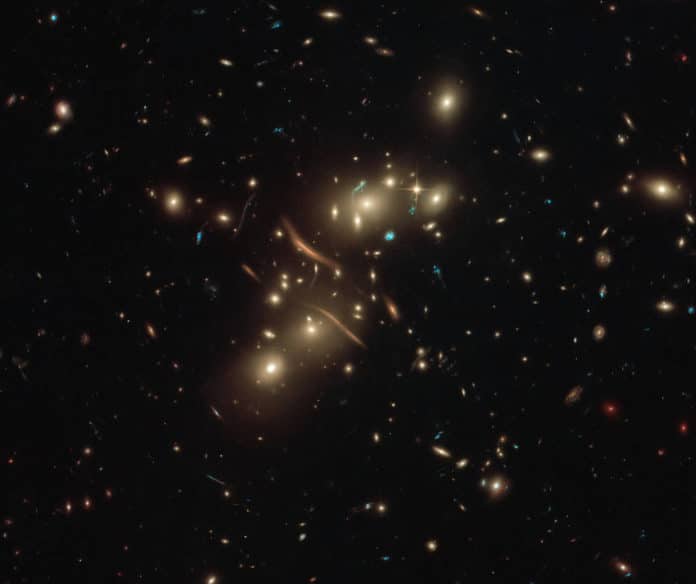A recent view captured by NASA/ESA Hubble Space Telescope impressively demonstrates the concept of gravitational lensing. Hubble captured an extraordinary view of galaxy cluster Abell 2813, located in the constellation of Cetus.
Also known as ACO 2813, the cluster is so distant that light from it takes approximately 3.4 billion years to travel to reach earth.
Hubble captured the delicate beauty of Abell 2813, which also illustrates the remarkable physics at work within it.
The image shows tiny dots, spirals, and ovals that are the galaxies belonging to the cluster. There are also curved arcs of light that are strong examples of a phenomenon known as gravitational lensing.
As the light emitted by distant galaxies passes by massive objects in the universe, the gravitational pull from these objects can distort or bend the light. This is called gravitational lensing. The curved crescents and “S” shapes are light from galaxies that lie beyond Abell 2813.
The image compilation of observations taken with the Hubble Space Telescope’s Advanced Camera for Surveys and Wide Field Camera 3.
